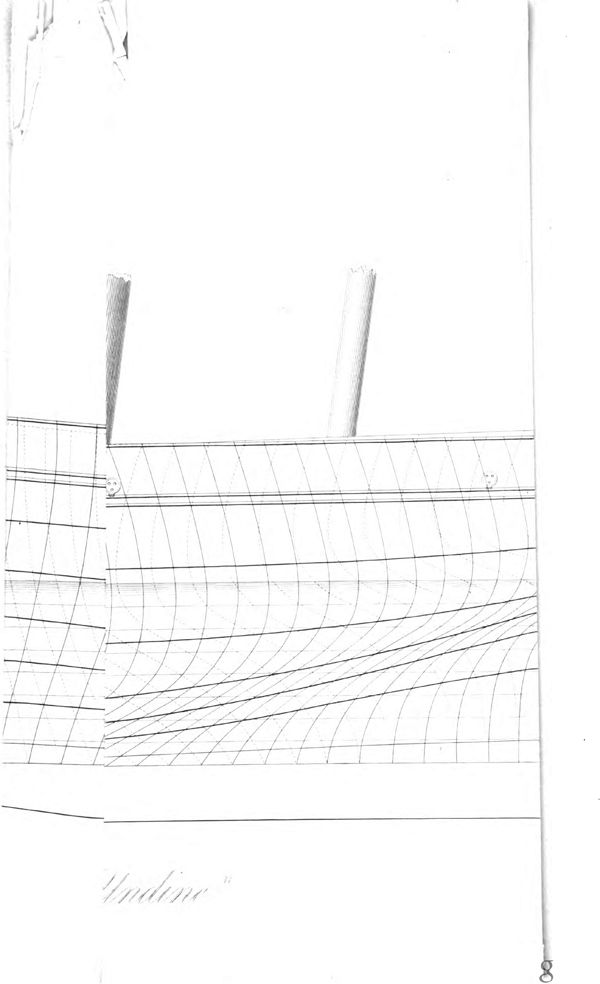wave(s) of translation

(unopened) plate (probably IX) showing a geometrical projection of a ship designed on the wave-principle, showing the manner in which the wave-lines may be rigidly preserved in combination with other points which give good qualities to a ship.
ex J. Scott Russell, The Wave-Line Principle of Ship-Construction,
in Transactions of the Institution of Naval Architects I (1860); Google scan here.
Encountered whilst searching dry practical details
(which phrase appears in another contribution, same volume).
John Scott Russell (1808-82, *) was a mathematically inclined shipbuilder (built the Great Eastern for Isambard Kingdom Brunel, for example). He discovered what he termed The Wave of Translation, now known by the expression soliton — a self-reinforcing solitary wave that maintains its shape while it travels at constant speed… caused by cancellation of nonlinear and dispersive effects in the medium.
*
An earlier exposition (containing beautiful figures and plates) was his Report of the Committee on Waves
to the Annual Meeting of the British Association for the Advancement of Science 6 (1837-8, *), and separately published as the Report on Waves (1845, *).
But if this subject be hard to understand, it is much harder to explain what becomes of the particles of water moved out of the way of the ship;
where they go;
how they get there;
if they ever return to their old places;
what force takes them away,
and what brings them back, if they come back;
and if they do not come back,
whence those come that replace them;
how they come there;
and how their places are in turn supplied.
20 October 2012
tags: curves; dry practical details; J. Scott Russell; soliton; waves; wave of translation